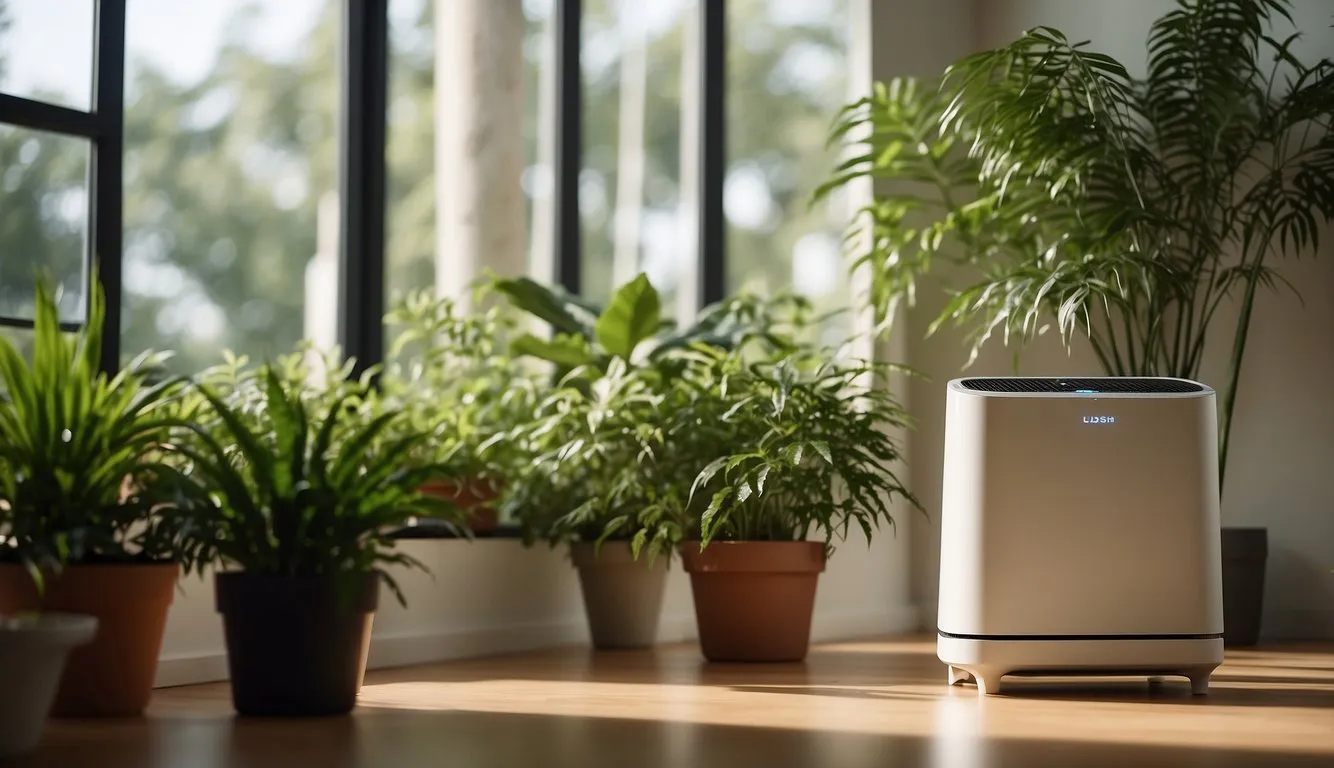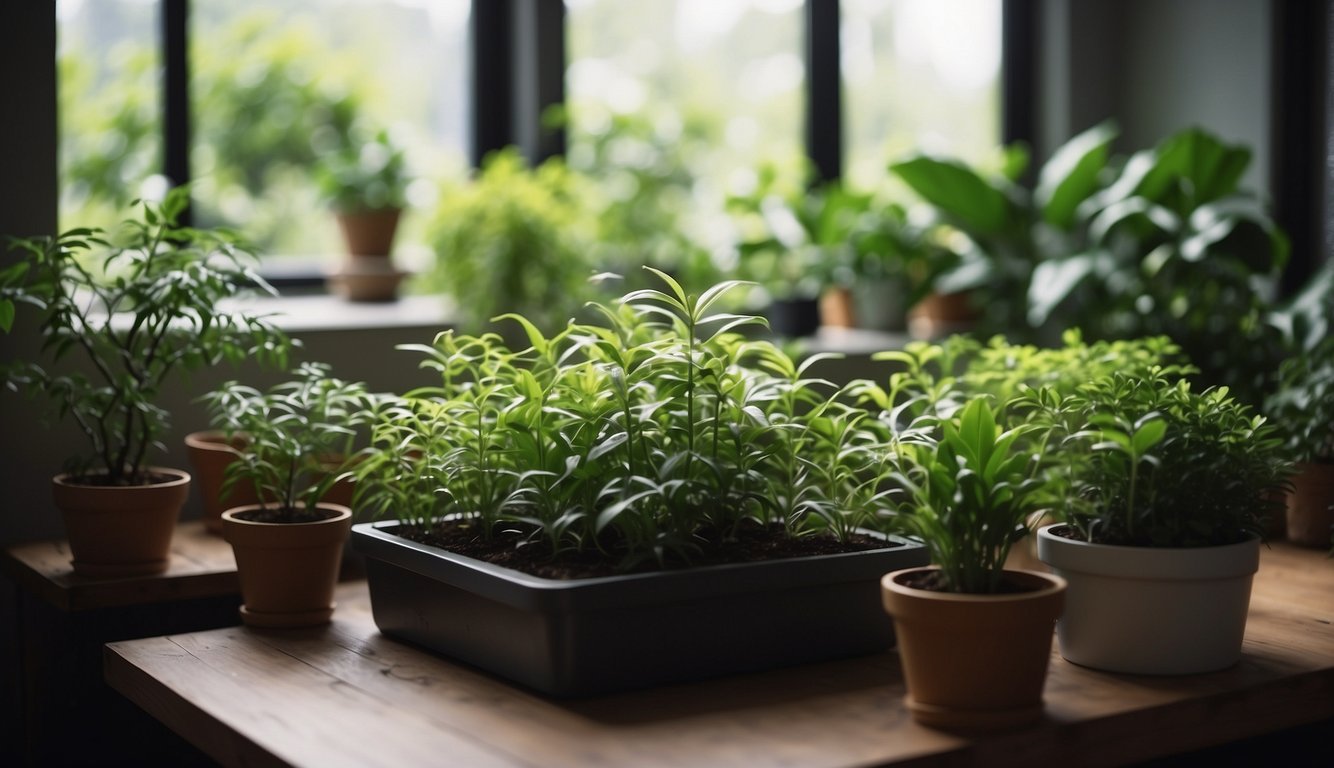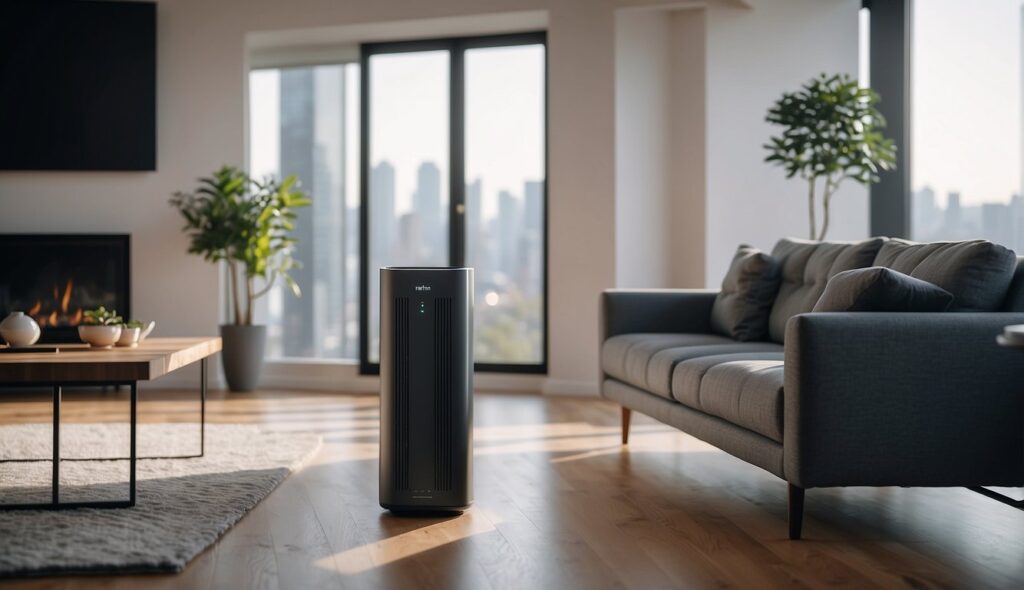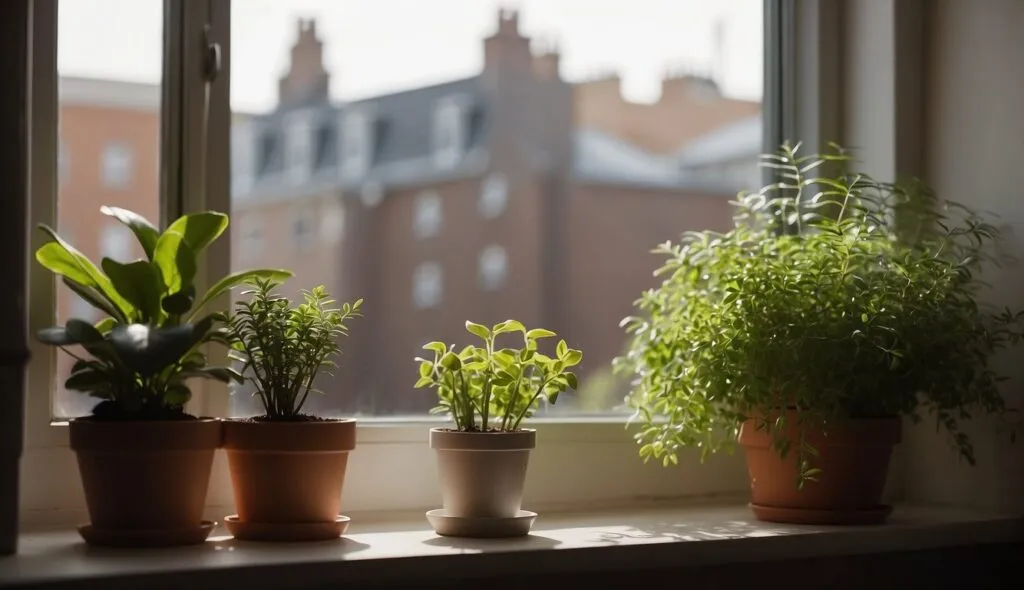Plant-based air purification is becoming increasingly popular as a way to improve indoor air quality. The science of air quality has shown that indoor air pollution can have a significant impact on human health, and phytoremediation is one of the most effective ways to combat this issue.

Phytoremediation is the process of using plants to remove harmful toxins and pollutants from the air. Certain plants are particularly effective at this, and selecting the right plants is crucial for successful air purification. Indoor air purification strategies can also include using air filters and improving ventilation, but plant-based air purification is a natural and sustainable option that can be used in addition to these methods.
Table of Contents
Key Takeaways
- Plant-based air purification is an effective way to improve indoor air quality and combat the negative health impacts of indoor pollution.
- Phytoremediation, the process of using plants to remove toxins and pollutants from the air, is a key component of plant-based air purification.
- Selecting the right plants is crucial for successful air purification, and plant-based air purification can be used in addition to other indoor air purification strategies.
The Science of Air Quality
At its core, air quality is all about the balance of gases and particles in the air we breathe. The air we breathe is made up of several different gases, including oxygen, nitrogen, and carbon dioxide. However, air pollutants like volatile organic compounds (VOCs) and particulate matter can disrupt this balance and have adverse effects on our health.
VOCs are organic chemicals that can easily evaporate into the air at room temperature. They are commonly found in products such as cleaning supplies, paints, and adhesives, and can cause respiratory irritation, headaches, and dizziness. Particulate matter, on the other hand, is a mixture of tiny particles and liquid droplets in the air that can come from a variety of sources, including car exhaust, wildfires, and industrial emissions. These particles can be as small as 2.5 micrometers or less in diameter and can penetrate deep into the lungs, causing respiratory and cardiovascular problems.
Plants have been found to be effective in removing pollutants from the air. They do this through a process called phytoremediation, which involves using plants to absorb, detoxify, and degrade pollutants. For example, plants like the peace lily and spider plant have been shown to remove VOCs like benzene and formaldehyde from the air. In addition, the roots and leaves of plants can also absorb particulate matter, making them effective air purifiers.
It’s important to note that while plants can help improve air quality, they are not a substitute for proper ventilation and air filtration systems. In addition, the effectiveness of plants in purifying the air depends on factors such as the type of plant, the size of the room, and the level of pollutants in the air.
In summary, air quality is all about maintaining a balance of gases and particles in the air we breathe. Air pollutants like VOCs and particulate matter can disrupt this balance and have adverse effects on our health. Plants can help improve air quality by removing pollutants through phytoremediation. However, they are not a substitute for proper ventilation and air filtration systems.
Phytoremediation and Plant Selection
Phytoremediation is a process that uses plants to remove pollutants from the environment. This technique can be used to clean up contaminated soil, water, and even air. In this section, we will discuss the mechanisms of phytoremediation and how to select effective plant species for air purification.
Mechanisms of Phytoremediation
Plants have the ability to remove pollutants from the air through a process called phytoremediation. This process involves several mechanisms, including absorption, adsorption, volatilization, and transformation. During absorption, pollutants are taken up by the plant through the leaves and roots. Adsorption occurs when pollutants are trapped on the surface of the plant. Volatilization involves the release of pollutants into the air by the plant. Finally, transformation occurs when plants break down pollutants into less harmful compounds through photosynthesis and transpiration.
Selecting Effective Plant Species
When selecting plant species for air purification, it is important to consider their ability to remove pollutants from the air. Some plants are more effective than others at removing specific pollutants. For example, spider plants are effective at removing formaldehyde, while peace lilies are effective at removing benzene. Additionally, plants with large leaves and high transpiration rates are generally more effective at removing pollutants from the air.
Here are some effective plant species for air purification:
| Plant Species | Pollutants Removed |
|---|---|
| Spider Plant | Formaldehyde |
| Peace Lily | Benzene |
| Boston Fern | Formaldehyde, Xylene |
| Snake Plant | Formaldehyde, Benzene, Trichloroethylene |
| Areca Palm | Formaldehyde, Xylene, Toluene |
In conclusion, phytoremediation is an effective and environmentally friendly way to purify the air. By selecting the right plant species, we can remove pollutants from the air and improve the quality of our indoor environment.
Indoor Air Purification Strategies
When it comes to indoor air purification, there are two main strategies: natural purification with houseplants and technological enhancements.
Natural Purification with Houseplants
One of the most effective and natural ways to purify indoor air is by using houseplants. Indoor plants have been shown to remove harmful toxins and pollutants from the air, such as benzene, formaldehyde, and trichloroethylene. Some of the best plants for air purification include spider plants, peace lilies, and bamboo palms.
In addition to their air purifying abilities, houseplants can also help to increase humidity levels in the air, which can be particularly beneficial during the winter months when indoor heating can cause dry air.
Technological Enhancements
While houseplants are a great natural option for air purification, technological enhancements can also be used to improve indoor air quality. One such enhancement is the use of green walls, which are essentially walls covered in plants. Green walls can help to remove pollutants from the air and can also act as a natural sound barrier.
Another technological enhancement is the use of HEPA filters, which are high-efficiency particulate air filters. These filters are designed to remove small particles from the air, such as dust, pollen, and mold spores. HEPA filters are particularly useful for people with allergies or asthma, as they can help to reduce symptoms.
Overall, both natural and technological air purification strategies can be effective in improving indoor air quality. By using a combination of houseplants and technological enhancements such as green walls and HEPA filters, we can create a healthier and more comfortable indoor environment for ourselves and our loved ones.
Health Impacts of Indoor Pollution
Indoor air pollution can have a significant impact on our health. According to a systematic review on mitigation of common indoor air pollutants using plant-based approaches, indoor air pollution has been a huge concern worldwide due to its adverse effects on both the surrounding environment and human health. The review found that indoor and outdoor air are contaminated with a variety of man-made and natural substances that are hazardous to living beings, whether plants or humans.
Particulate matter (PM) is one of the most common indoor air pollutants, and it can cause respiratory problems, especially in people with pre-existing conditions such as asthma and chronic obstructive pulmonary disease (COPD). PM2.5 and PM10 are two of the most dangerous types of particulate matter, and they can penetrate deeply into the lungs and cause serious health problems.
In addition to respiratory problems, indoor air pollution can also have other health impacts. For example, a recent study found that exposure to indoor pollutants may increase the risk of developing COVID-19. The study found that exposure to PM2.5 and nitrogen dioxide (NO2) can weaken the immune system and make it more difficult for the body to fight off the SARS-CoV-2 virus.
Fortunately, there are ways to reduce indoor air pollution and improve our health. One effective approach is to use plant-based remediation. Plants can absorb pollutants such as volatile organic compounds (VOCs), formaldehyde, and benzene, and convert them into harmless byproducts. A review of plant-based remediation of air pollution found that many kinds of plants have the ability to remediate the environment.
In conclusion, indoor air pollution can have serious health impacts, especially on the respiratory system, and can even increase the risk of developing COVID-19. Using plant-based remediation is an effective way to reduce indoor air pollution and improve our health.
Conclusion

In this article, we have explored the benefits of plant-based air purification. We have seen how plants can be used to control air pollution in both indoor and outdoor environments, making it a cost-effective and eco-friendly solution.
The development of modular planter systems has allowed for a greater diversity of plants to be used in air purification, making it possible to treat the air for the whole building. This has led to the development of more efficient air purification techniques that can remove or reduce common indoor air pollutants.
Plant-based air purification is a natural and effective way to improve indoor air quality. Plants have been shown to regulate temperature, remove pollutants, and reduce bacterial and fungal infection spread. They are also a cost-effective and eco-friendly solution to indoor air pollution control.
In conclusion, plant-based air purification is a promising solution for improving indoor air quality. It is a cost-effective and eco-friendly alternative to traditional air purification methods. By using plants to purify the air, we can create a healthier and more sustainable environment for ourselves and future generations.
Frequently Asked Questions

What are the top-rated plants for purifying indoor air?
There are several indoor plants that are known to be effective air purifiers. Some of the top-rated plants for purifying indoor air include Spider Plant, Peace Lily, Snake Plant, Aloe Vera, and Bamboo Palm. These plants are not only easy to maintain but also help in removing toxins from the air, making it healthier to breathe.
How do natural algae air purifiers compare to traditional purifiers?
Natural algae air purifiers are a new technology that uses algae to purify the air. They are a more sustainable and eco-friendly alternative to traditional purifiers, which use chemicals to clean the air. Natural algae air purifiers are also more cost-effective and require less maintenance than traditional air purifiers.
Which air-purifying plants are recommended by NASA for indoor use?
NASA has conducted extensive research on air-purifying plants and has recommended several plants for indoor use. Some of the air-purifying plants recommended by NASA include Snake Plant, Peace Lily, Spider Plant, and Golden Pothos. These plants are known to remove harmful toxins from the air, making it healthier to breathe.
What recent advancements have been made in plant-based air purification technology?
Recent advancements in plant-based air purification technology have led to the development of more efficient and effective air purifiers. One of the most notable advancements is the use of natural algae to purify the air. This technology is not only eco-friendly but also cost-effective and requires less maintenance than traditional air purifiers.
How effective are Briiv air purifiers in comparison to other plant-based systems?
Briiv air purifiers are a relatively new technology that uses natural filters to purify the air. They are known to be as efficient as 3,043 medium-sized houseplants in cleaning the air. Briiv air purifiers are also more sustainable and eco-friendly than traditional air purifiers, making them a popular choice among environmentally conscious consumers.
Can indoor air-purifying plants also benefit the health of other indoor plants?
Yes, indoor air-purifying plants can also benefit the health of other indoor plants. These plants help in removing harmful toxins from the air, which can improve the overall health and well-being of all indoor plants. In addition, air-purifying plants can also help in reducing the risk of airborne diseases and allergies, making them a must-have for any indoor space.


